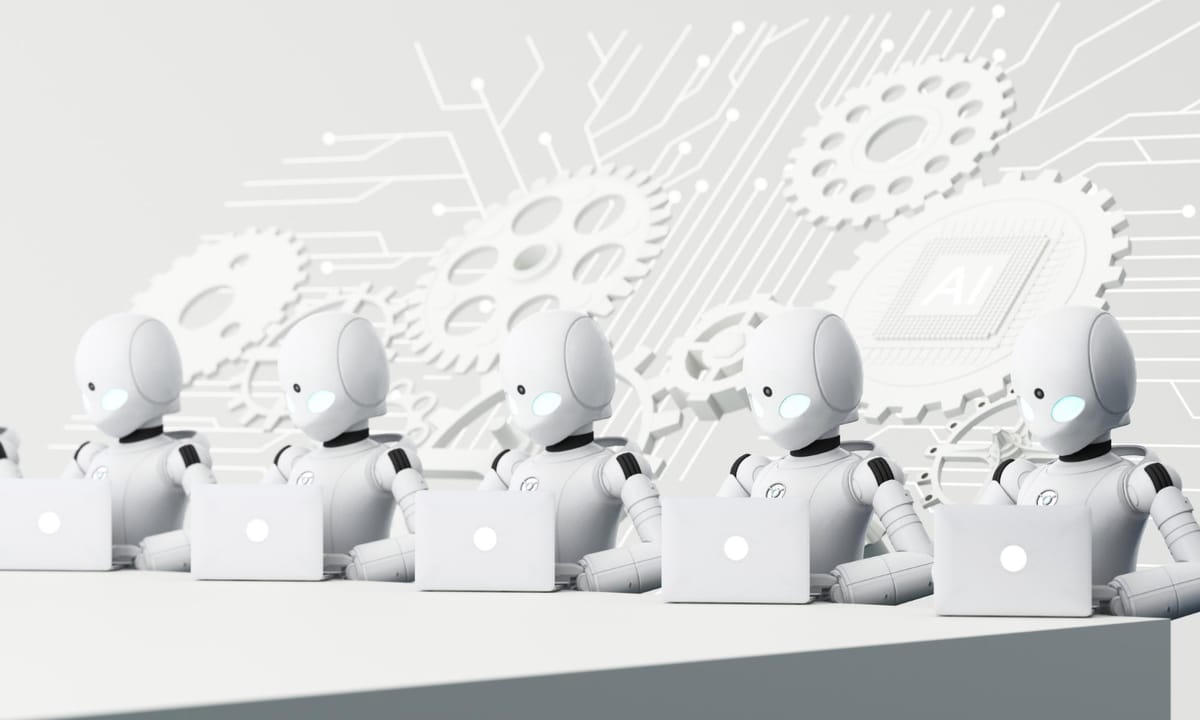What Is Robotic Process Automation (RPA)?
Robotic Process Automation (RPA) automates repetitive tasks, enhancing efficiency and accuracy. Learn how RPA works, its benefits, and future trends.

Robotic Process Automation (RPA) is transforming the way businesses handle repetitive tasks by automating rule-based processes. Organizations across various industries are adopting RPA to enhance efficiency, reduce human error, and streamline workflows. This article explores what RPA is, how it works, its benefits, key use cases, and its future in automation.
How Does RPA Work?
RPA technology allows software robots to mimic human actions such as clicking, typing, extracting data, and performing rule-based operations. Unlike traditional automation, which requires deep system integration, RPA works at the user interface (UI) level, making it highly adaptable.
Key components of RPA include:
- Bots: Software programs that execute tasks automatically.
- Orchestrators: Tools that manage and monitor bot performance.
- AI Integration: Advanced RPA platforms incorporate machine learning (ML) and natural language processing (NLP) for improved decision-making.
Popular RPA tools include UiPath, Automation Anywhere, and Blue Prism, each offering various capabilities for business automation.
Types of RPA Bots
RPA bots can be categorized into three main types:
- Attended Bots: These require human intervention and assist users with tasks in real time.
- Unattended Bots: Operate independently in the background, automating back-office tasks.
- Hybrid Bots: Combine attended and unattended automation for more flexible workflows.
Key Benefits of RPA
Organizations are leveraging RPA to achieve the following advantages:
- Improved Efficiency: Automating repetitive tasks reduces processing time and increases overall productivity.
- Cost Savings: Businesses can minimize operational costs by reducing the need for manual labor.
- Higher Accuracy: RPA eliminates human errors in data entry and process execution.
- Scalability: Bots can handle fluctuating workloads without additional infrastructure.
- Compliance and Security: Ensures consistent adherence to regulations and secure data handling.
- Improved Employee Satisfaction: By automating mundane tasks, employees can focus on higher-value work.
Common Use Cases of RPA
RPA is widely used across multiple sectors, including:
Finance and Accounting
- Invoice Processing: Automating data extraction from invoices for faster approvals.
- Bank Reconciliation: Matching transactions between bank statements and internal records.
- Fraud Detection: Identifying anomalies in financial transactions.
Human Resources (HR)
- Resume Screening: Extracting and categorizing candidate details for recruitment.
- Employee Onboarding: Automating document collection and verification.
- Payroll Processing: Automating salary calculations and payments.
Customer Support
- Automated Email Responses: Parsing incoming customer queries and routing them to the right department.
- Chatbots: Handling basic customer inquiries using predefined responses.
- Customer Data Management: Automating updates to customer records.
Healthcare
- Insurance Claims Processing: Extracting and verifying claim details efficiently.
- Medical Data Entry: Automating data logging for patient records.
- Regulatory Compliance: Ensuring data security and compliance with industry regulations.
Logistics and Supply Chain
- Order Processing: Automating order approvals and inventory updates.
- Shipment Tracking: Extracting real-time tracking data from logistics platforms.
- Demand Forecasting: Using AI-powered bots to predict inventory needs.
RPA vs. AI: Understanding the Difference
While RPA and AI are often mentioned together, they serve distinct purposes:
- RPA follows predefined rules and automates structured tasks.
- AI learns and adapts, making it suitable for unstructured data processing.
Integrating AI with RPA enables Intelligent Automation, allowing bots to handle complex decision-making tasks, such as sentiment analysis and document classification.
How RPA and AI Work Together
Businesses are increasingly integrating AI into RPA to achieve smarter automation. For example:
- AI-powered chatbots: Responding to customer queries with natural language understanding.
- Document Parsing with AI: Extracting key data from unstructured documents.
- Predictive Maintenance: Using AI models to anticipate equipment failures and trigger automated responses.
The Role of Airparser in RPA-Driven Workflows
Data extraction is a critical component of many RPA implementations. Tools like Airparser enhance RPA workflows by enabling intelligent document parsing. Whether it's extracting structured data from emails, invoices, or PDFs, Airparser integrates seamlessly with RPA bots, ensuring a more automated and efficient data flow. By leveraging AI-powered parsing, businesses can further reduce manual effort and enhance process accuracy.
For instance, companies using RPA to automate invoice processing often rely on document parsing to extract relevant data such as vendor names, invoice amounts, and payment details. Airparser provides a seamless way to extract this data and feed it into an RPA workflow, eliminating the need for manual intervention.
The Future of RPA
As automation technologies evolve, RPA is set to become more advanced with:
- Hyperautomation: The convergence of RPA, AI, and process mining to enable end-to-end automation.
- No-Code/Low-Code Adoption: Making RPA more accessible to non-technical users.
- Cloud-Based RPA: Offering greater flexibility and scalability for businesses.
- Cognitive RPA: Enhancing bots with AI capabilities to handle unstructured data and complex workflows.
- Industry-Specific RPA Solutions: More tailored automation solutions for healthcare, finance, and manufacturing.
Conclusion
RPA is reshaping industries by automating repetitive tasks and improving operational efficiency. As businesses continue to integrate AI and machine learning into their automation strategies, RPA’s potential will expand even further. Companies looking to enhance their workflows should consider leveraging intelligent data extraction tools like Airparser to maximize the benefits of automation.
By adopting RPA, organizations can reduce manual effort, cut costs, and achieve greater accuracy in their daily operations—making automation a crucial part of the future of work.





